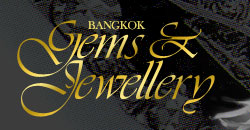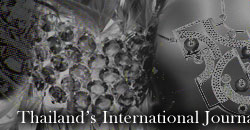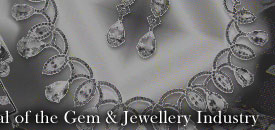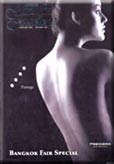


 |
 |
 |
| |
 |
Old
issues |
Vol.
18 No. 7 -- February 2005 |
|
 |
||||
AIGS
Reports on Lead Glass Filled Repaired Rubies |
|||||||||||||
In March 2004, the Gemmological Association of All Japan (GAAJ) issued an alert stating that it had encountered a ruby, which showed flash effect from fissures and fractures and that its analysis showed that the stone was impregnated with lead based glass. Following the GAAJ report, the AGTA, ICA, et al also conducted their studies and issued their reports. Thankfully this time, they did not accuse anyone of trying to cheat the consumer, mainly because this treatment is extremely easy to identify. The Asian Institute of Gemological Sciences (AIGS) also began its own round of testing and has subsequently released its report. The latest version of the report (version 03) written by AIGS Laboratory Director Vincent Pardieu was released on January 27, 2005. We present here an edited version of the report. "In November 2004, a large number of rubies having some uncommon features were brought for testing to the AIGS laboratory in Bangkok. For two months more than 200 of these rubies were analysed in the laboratory. Lead was detected in their fissures and cavities. Between September and December 2004, a total of 244 of these rubies ranging in size from 3-97 carats were examined at the AIGS laboratory including 12 stones over 25 carats. |
|||||||||||||
|
|||||||||||||
Surprised
by the large number of stones suddenly appearing on the Bangkok market,
AIGS decided to give priority to the study of these stones and began
to research this new product. Following several weeks of enquiry we
found that the treatment was being performed at Chanthaburi, Thailand.
At the end of December 2004, two gemmologists from AIGS visited the
company that was applying the treatment. We were very surprised to learn
that the treatment expert, Mr. Mahiton Thondisuk had been a student
at the AIGS. Mr. Mahiton Thondisuk explained to the AIGS gemmologists that this treatment was the result of five years of study in association with several Thai scientists from different universities in Thailand. The idea was to develop a glass compound suitable to "repair" fissures in rubies. "Beautiful natural stones for which human intervention is limited to cutting and polishing are very rare and extremely expensive", explained Mr. Mahiton Thondisuk. "There are many more low quality gemstones compared to the tiny amount of real gem quality stones so that if we can find a good way to repair them we can add them to the trade. In the beginning, I was not thinking that people would actually buy this product ...... but some people began to buy these stones...in fact, I don't really like to do this treatment but the market is looking for nice looking cheap stones." |
|||||||||||||
 |
|||||||||||||
Left
to right : Andilamena rough rubies from Madagascar before treatment. |
|||||||||||||
In fact, this treatment
is not really a new development. The process was developed in 1982
by diamond cutter Zvi Yehuda from Ramat Gan to produce "Yehuda
diamonds". The process used for fracture filling diamonds was
quite common in the 1990's. Several companies were producing such
stones at that time. Many studies were conducted and many articles
about them are found in gemmological literature or on the internet.
In the fall 1994 edition of Gems & Gemology an important study
of these diamonds was presented. At about this same time, AIGS was
developing some special radiographic instruments to detect lead glass
filling in diamonds. |
|||||||||||||
|
|||||||||||||
An
experienced gemmologist using a microscope and dark field illumination
will be able to identify correctly the "repaired rubies" without
any difficulty: Using dark field illumination, the lead-rich glass filled
fissures will display blue/orange flashes. This observation can be easier
under fibre optic illumination looking near parallel to the fissure.
This is a very typical diagnostic feature that is similar to opticon
in emeralds or lead glass in filled diamonds. With careful close up
examination of the fissures an observer may also find gas bubbles or
"exsolved platelets". Gas bubbles were found in many rubies
filled with the simple lead glass. Some observers could be disturbed
by the fact that the heat treatment temperature is not high compared
with the temperature at which many stones are heated nowadays using
gas furnaces. Many inclusions (rutile silk that is not completely dissolved
at the lower temperature - Ed.) may still appear as "unheated"
which could disturb an inexperienced observer. |
|||||||||||||
|
|||||||||||||
C
o p y r i g h t © 2 0 0 0 - 2 0 1 6 D4U
WEB TM A l l R
i g h t s R e s e r v e d
|